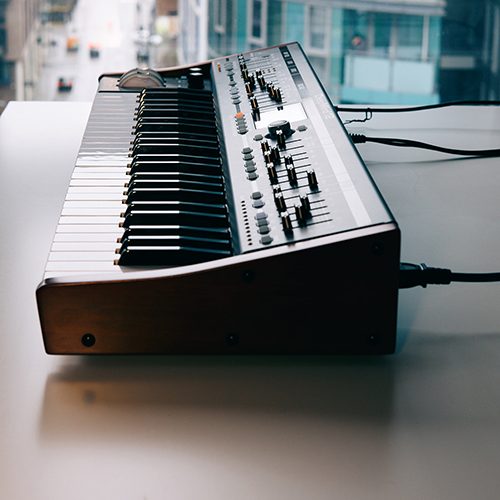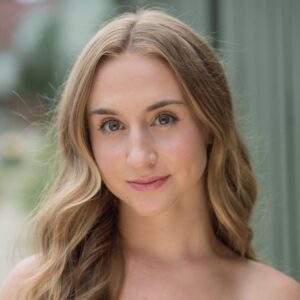For those of us who play an instrument, there almost always comes a time when we finally are ready to start trying our hand at writing music. But where to start? Is there anything specific you need to begin writing music? Well, if I’m being honest there really isn’t much that is necessary, but there are a few things that would certainly make the process easier. So I’ve compiled a list of the ten most essential pieces of gear for songwriting.
Your musical instrument of choice
Even if you’re a singer and don’t play a physical instrument, having a guitar or piano available to you to figure out chord structures is always a good idea.
There are free resources available that you can also use to listen to chords or plot out a song’s roadmap, but if you have a physical version of the instrument available I would recommend starting with that.
A voice memo app
Inspiration can hit at odd times, like when you’re in line at the supermarket, or stuck in traffic. Having a voice memo app can allow you to take hands-free notes at any time.
iPhones and Androids come loaded with their own voice recording apps, but depending on your needs it may be worth it to splurge and download another memo application.
Microphone
This sounds obvious, but for the musician just starting on their composing path it is worth investing in a good microphone. You don’t need to break the bank but trust me when I say that having a microphone that allows you to monitor your own instrument or vocals is invaluable.
If you’re just starting out, look for USB microphones that can plug directly into your computer. I personally use the Audio-Technica AT2020 for any kind of audio I need to record. Make sure to get a pop filter as well.
Notebook
While working digitally is good when you have to work on the go, using a notebook is a really good way to flesh ideas out. It can also allow you to feel free to do whatever you want, even if it isn’t necessarily writing songs – doodling in the margins or writing in different colors can help spark creativity and bring some inspiration to the surface you may not have found otherwise.
A timer
Okay, this one is kind of weird, but hear me out: I have a hard time with procrastination. Then stressing about procrastinating. Then procrastinating about procrastinating. And, well, you get the idea.
One of the best methods I’ve found for sitting down and actually finishing a project is to set a timer. For instance, “for the next 20 minutes I will only work on this painting.” Of course, you don’t have to stop when the timer goes off, this is simply a way to get your mind focused and in the zone for the songwriting.
HumOn
Yes, another app. But this one does something different from the voice memo app: it records and transcribes your humming.
This is great for when you want to record a melody line, but don’t have the words together just yet – while the app is a bit clunky at times, the benefits far outweigh the flaws.
MIDI Controller
This is for the orchestra conductor when the entire ensemble is on summer vacation.
I’m kidding of course, but for the song writer that wants to either digitally transcribe their own instrument or wants to use elements of instruments that they don’t play, the MIDI controller is a great way to do that. M-Audio Oxygen 49s are pretty good for the price, in my opinion, but sometimes electric keyboards are already set up to work as MIDI controllers, so check to see if your model has that capability before splurging.
Songwriting mood board
The whole idea of writing a song can be great! But… what kind of mood or sound are you going for? A sonic mood board (see: playlist) can really help shape a song from a bare concept to something that can actually be released for play. Personally, I organize my music by mood already, but if you’re the type that prefers to organize by artist or decade, it may be worth your time to sort out a batch of songs that fit the aesthetic of the songs you are trying to create. Just to listen to when you can’t quite get into the groove.
DAW
In case you’re unfamiliar with the term, a DAW is a digital audio workstation. Think of it like the musician’s version of a photographer’s photo editing system.
There are a lot of different versions to choose from, but for the newly minted musician I would recommend Audacity It’s free and works with most computers.
However, the industry standard is ProTools, so if you want to get some experience using what the studios use, I would recommend biting the bullet and purchasing this one. There are also a lot of other DAWs available depending on your computer, so Googling “best DAWs for (computer)” can’t hurt either.
A dedicated area for recording
Finally, like any hobby or career, you need a place to stage your creative pursuit. A bedroom or living room can work fine early on, but as you begin to transition into recording at home it may be time to start looking into acoustic paneling and other sound proofing devices for your recording space. You can use your closet for vocals early on (the small space and cloth muffles echo reasonably well), but it’s going to be a hassle to try to, say, bring your tuba or violin into the closet to record unless your closet is ginormous.
At the end of the day though, the point of songwriting is to allow yourself to create in a way uniquely suited to music. Painting doesn’t give the same release of creative energy as writing does, which doesn’t allow the same creative energy as music. So if you don’t feel that any of this gear is right for you, go for it! Some of us just want to play because we enjoy it, so have fun! Enjoy music! Most of all, though, be safe and stay well.







